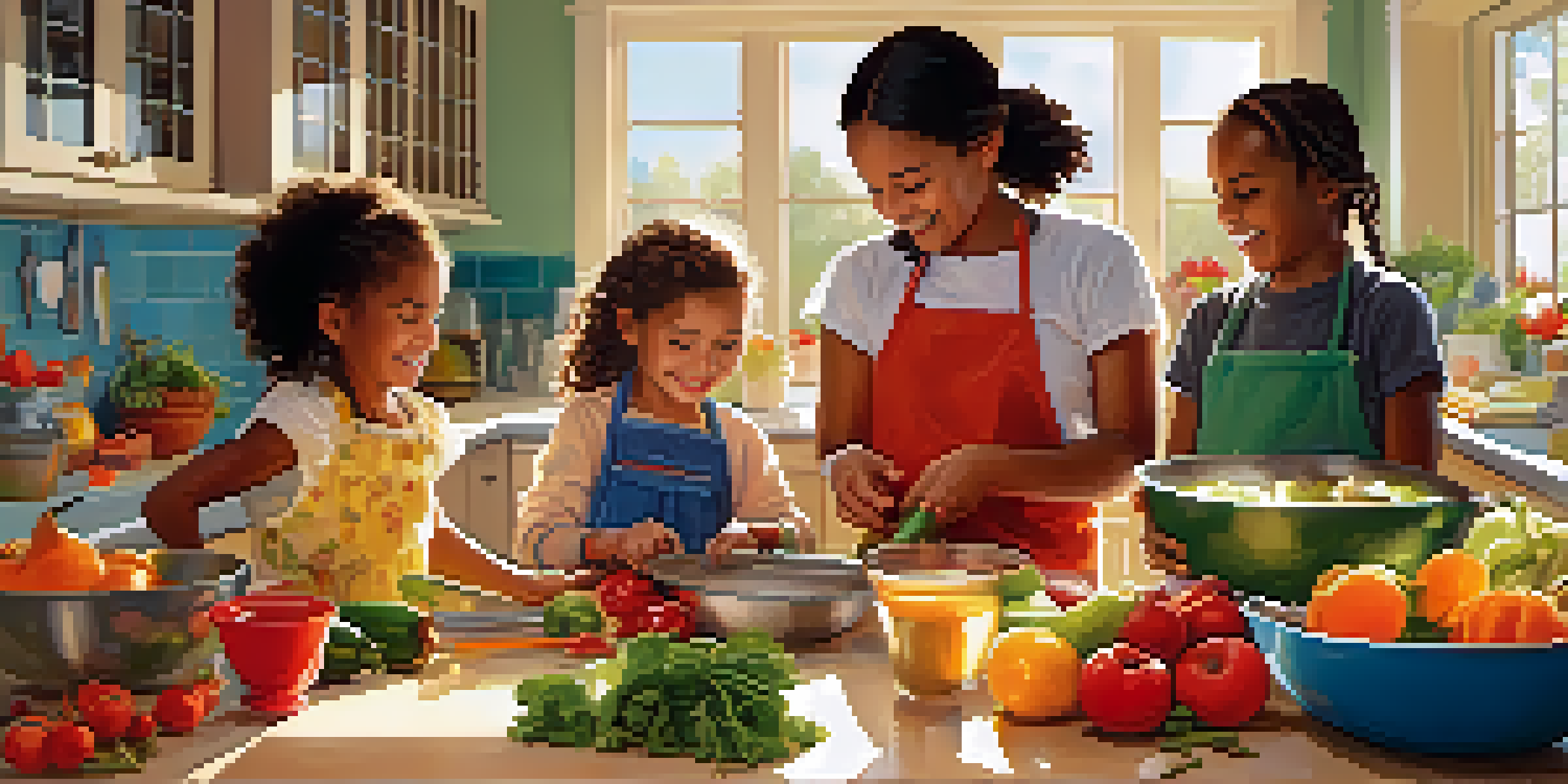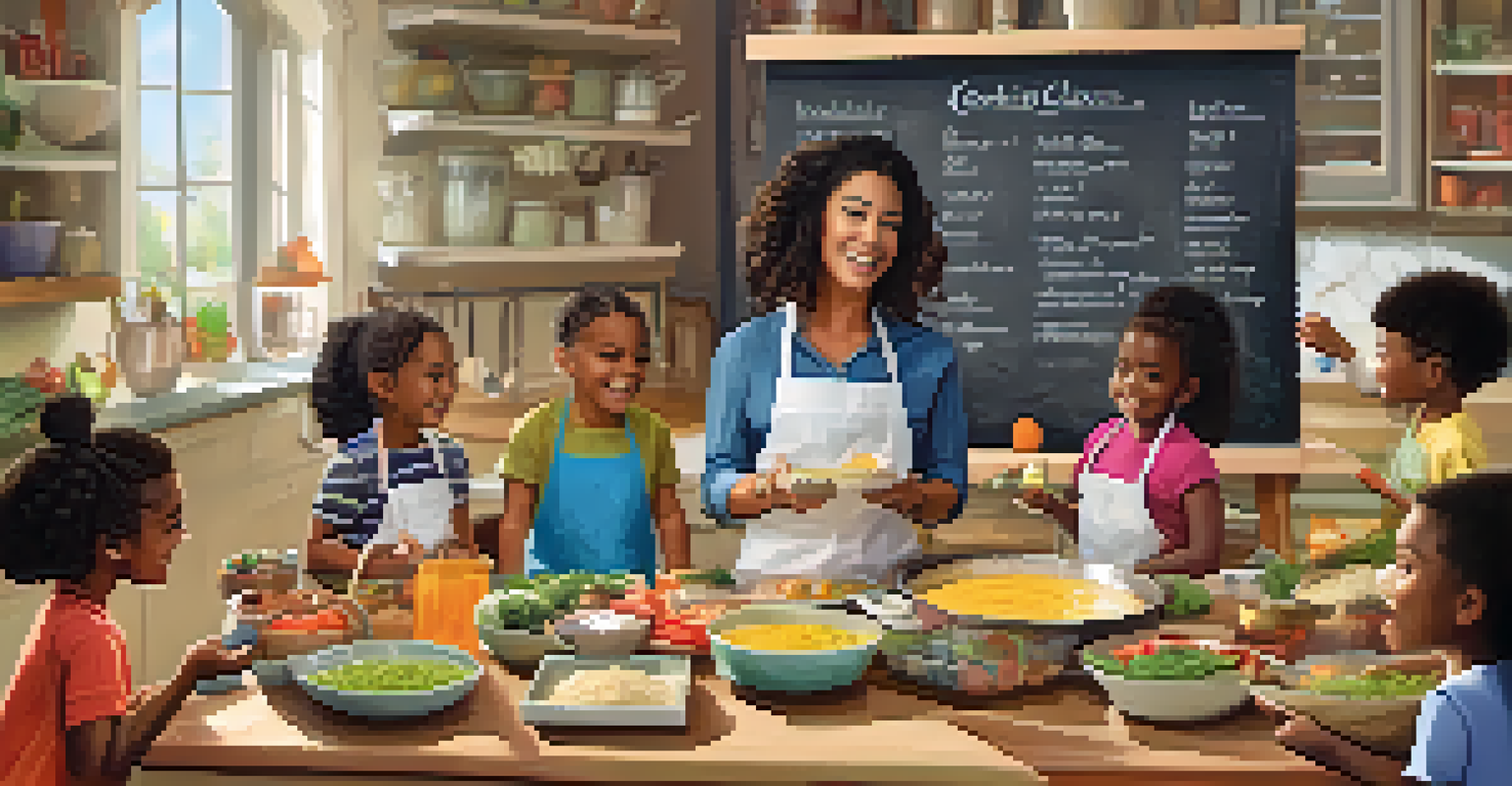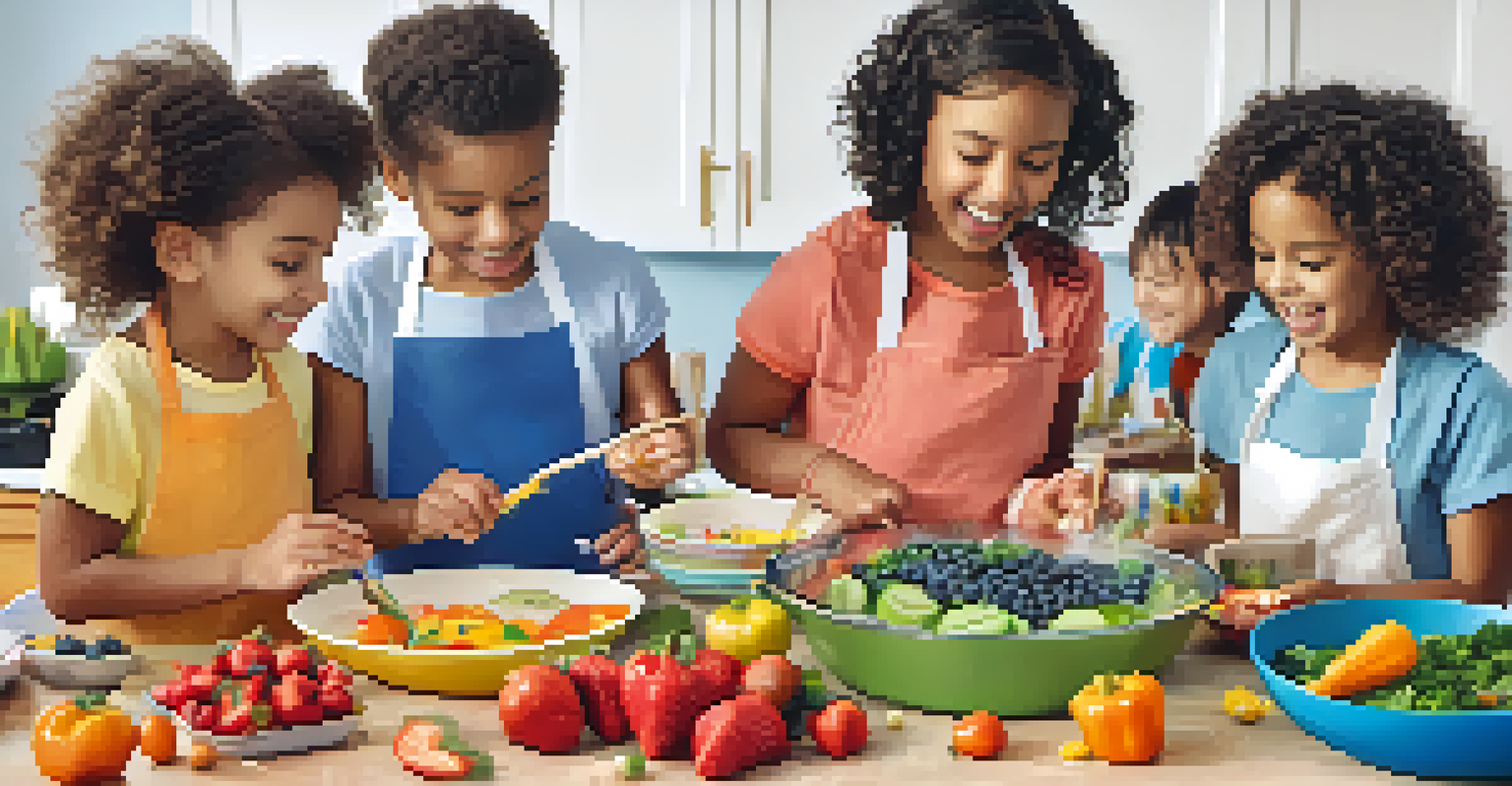Healthy Cooking Classes for Kids: Fun Techniques to Learn

The Importance of Healthy Cooking for Kids
Teaching kids how to cook healthy meals is essential for their growth and development. It empowers them to make better food choices, fostering a lifelong appreciation for nutritious eating. When children learn to cook, they not only understand the ingredients but also the impact of food on their health.
Cooking is like love. It should be entered into with abandon or not at all.
Moreover, cooking can be a fun and interactive way for kids to explore new flavors and textures. By introducing them to healthy ingredients, you help them build a positive relationship with food. This is crucial in combating the rise of childhood obesity and poor eating habits.
Incorporating cooking into a child's routine can also enhance their confidence and creativity. As they experiment with flavors and techniques, they develop a sense of accomplishment that encourages them to try more dishes. Healthy cooking classes can thus be both educational and enjoyable.
Engaging Techniques to Spark Interest
To make healthy cooking classes exciting, start with simple and engaging techniques. Kids love hands-on activities, so let them chop veggies, mix ingredients, and even create their own recipes. This approach keeps them engaged and fosters a sense of ownership in the cooking process.

Encouraging creativity is another effective method. Allow kids to personalize their dishes by choosing their favorite healthy toppings or spices. This not only makes cooking fun but also introduces them to the idea that healthy meals can be both nutritious and delicious.
Empower Kids with Healthy Cooking
Teaching kids to cook healthy meals helps them make better food choices and fosters a lifelong appreciation for nutritious eating.
Utilizing themes can also spark interest. For instance, a 'Rainbow Day' where kids create colorful dishes using various fruits and vegetables can be a delightful way to teach them about nutrition. The visual appeal of a vibrant plate can ignite excitement and curiosity.
Incorporating Nutrition Education
Healthy cooking classes are the perfect opportunity to include nutrition education. Teaching kids about the food pyramid, the benefits of different food groups, and how to read nutrition labels can enhance their understanding of healthy eating. This knowledge empowers them to make informed choices even outside the kitchen.
Tell me what you eat, and I will tell you what you are.
Use fun activities like food scavenger hunts or matching games to reinforce their learning. For example, kids can match fruits and vegetables to their health benefits, making the experience interactive and memorable. Hands-on learning is often more effective than traditional methods.
Additionally, discussing the importance of portion sizes and balanced meals can help instill lifelong habits. By understanding how to create a balanced plate, kids can learn to enjoy a variety of foods in moderation, setting the stage for a healthy lifestyle.
Cooking Techniques for Young Chefs
Teaching kids basic cooking techniques can be both fun and educational. Start with simple skills like washing vegetables, peeling fruits, or measuring ingredients. These foundational techniques are crucial and can be introduced gradually as they become more comfortable in the kitchen.
As they progress, introduce more advanced techniques like sautéing or baking. Kids love to see the transformation of ingredients when they are cooked, and learning these skills can boost their confidence. For example, showing them how to sauté vegetables can lead to delicious stir-fry creations.
Create Engaging Cooking Experiences
Incorporating hands-on activities and themes in cooking classes keeps kids excited and encourages creativity in the kitchen.
Always remember to emphasize safety in the kitchen. Teaching kids about proper knife handling, stove safety, and hygiene can help prevent accidents and instill responsibility. Safety is key to ensuring that cooking remains a positive experience for them.
Creating a Positive Cooking Environment
A positive cooking environment is crucial for kids to enjoy their culinary adventures. Ensure the kitchen is organized, with all ingredients and tools easily accessible. This setup makes the cooking process smoother and less intimidating for young chefs.
Encouraging teamwork can also enhance the experience. Cooking together fosters communication and collaboration, making it a great bonding activity for families or friends. Kids learn valuable social skills while having fun in the kitchen.
Lastly, celebrate their efforts! Whether it’s praising their work or enjoying a family meal together, acknowledging their accomplishments can motivate them to continue exploring healthy cooking. It’s the little celebrations that make the experience memorable.
Involving Parents and Caregivers
Involving parents and caregivers in healthy cooking classes can amplify the learning experience. When families cook together, it not only reinforces the skills learned but also encourages healthy habits at home. This shared experience can foster a love for cooking and healthy eating across generations.
Consider organizing family cooking nights where kids can showcase their skills. This not only boosts their confidence but also allows parents to see the importance of healthy cooking firsthand. Engaging families creates a supportive environment for children to thrive.
Involve Families for Lasting Impact
Engaging parents and caregivers in cooking classes reinforces healthy habits at home, creating a supportive environment for children.
Additionally, providing resources for parents, such as meal planning tips or healthy recipes, can help them continue the learning at home. When families work together towards healthier eating, everyone benefits. It’s a win-win situation that promotes a healthier lifestyle.
Exploring Cultural Cooking Traditions
Exploring cultural cooking traditions can enrich kids' culinary education. Different cultures offer a variety of healthy recipes and unique cooking techniques, making learning both fun and educational. For example, introducing kids to Asian stir-frying or Mediterranean salads can broaden their culinary horizons.
Incorporating cultural themes into cooking classes can also spark curiosity about different cuisines. Kids can learn about the origins of various dishes, ingredients, and cooking methods, enhancing their appreciation for diversity in food. This not only makes cooking exciting but also teaches respect for different cultures.

Additionally, cooking traditional dishes can be a great way to connect with family heritage. Kids can learn recipes passed down through generations, creating a sense of belonging and pride. Celebrating cultural diversity in cooking can inspire creativity and foster an understanding of the world.